The Lost Brigade, Pt. 1
Ukraine's forgotten conscripts and the start of the Russian invasion
The 51st Separate Mechanized Brigade is the sole Ukrainian military unit that did not make it until the end of 2014. At the outbreak of the conflict, the barebones formation ballooned in size to the army’s largest brigade with thousands of mobilized servicemen. After only four months at the front, though, it accrued such terrible losses and so many public controversies that it was publicly disbanded by President Poroshenko in September of that year - the only such case in the history of the Ukrainian military. In this series of articles, I want to use the example of the 51st as a prism to look at something I think is woefully underexplored: the experience of a 2014 Ukrainian conscript. The regular fighter. A civilian forced by Russian aggression to abandon their peaceful life and endure hell. Forgotten. I want to describe who these men were, what they went through, and what happened around them that fateful summer in the endless steppe of the war-torn Donbas.
VOLNOVAKHA. SHOCK AND AWE
Leonid Polinkevych was born in the small village of Kolky, Volhynia, on September 19th 1983. According to Leonid’s mother, she and his father - head of the village council - wanted him to be a teacher, something his father could easily arrange. Leonid, or Lionia as his loved ones call him, seems to have had other plans. From a young age he was interested in engineering. In spare time, he would repair everything from bicycles to tractors. After finishing high school, the upbeat young man departed to the other side of the country to study at the Kharkiv Institute of the Tank Forces.
Leonid’s sister Svitlana recounts:
“He wrote to me of his life, dreams, how much he wanted to raise a son… Every letter was filled with optimism and a thirst for life. […] He married at 24, and soon his daughter Oleksandra was born.”
After finishing his studies at the institute, Leonid returned to his home region and began service in the capital of Volhynia, Volodymyr-Volynskyy. The unit stationed there was the 51st Mechanized Brigade, a descendant of the old and decorated 51st Mechanized Division of the Red Army. It was a shadow of its former self, though. Of the 4500 servicemen it would have to field in case of war, it only had 400.
This was broadly true for most of the Ukrainian army at the onset of the war. Most estimates place the number of combat-capable (roughly meaning well-equipped, trained, and motivated) soldiers at around 5000 total. Furthermore, most were concentrated in the few elite Airmobile units, analogous to the Russian VDV. The rest of the army only existed on paper, consisting of a bloated officer corps and a revolving number of conscripts. Ukraine’s compulsory military service, intended to prepare a reserve of trained men, was easily evaded with bribes or legal loopholes. To say that military service was not socially prestigious is a serious understatement.
In 2012, the ongoing Yanukovych-era reforms of the army led to a change in leadership of the 51st Mechanized Brigade - the 38 year old Colonel Volodymyr Yatskiv replaced the now famous Valerii Zaluzhnyi, who commanded the unit for three years since 2009.
Yatskiv served in the 24th Mechanized Brigade, where he went from the commander of a platoon to deputy head of the unit. He participated in various major training exercises and overseas peacekeeping missions. The experienced young officer seemed to enjoy a significant degree of popularity among the soldiers and a large number of powerful friends both within his old unit and the 51st.
In 2013, the Brigade was engulfed in a corruption scandal: in a mindbogglingly brazen scheme, civilians unaffiliated with the unit had dug over a hundred small sand quarries within the Brigade’s training grounds. With over a 100 illegal quarries uncovered in the 6,500 hectare area, the Ministry of Defence, now in the spotlight, commented that all of the training ground’s territory was being actively used by the army. An investigation by VolynPost uncovered something else: a vast majority of the facility was in poor maintenance or abandoned outright; the illegal quarries were out in the open.
This incident serves to highlight the utter lawlessness and shameless corruption plaguing Ukraine’s military at the time. And though the official investigation’s results seem to not have been made public, the sheer scale of the issue makes it hard not to question whether the Brigade’s commander was somehow implicated.

Following the ousting of President Yanukovych in February 2014, the Russian Federation used special forces and local collaborators to forcefully seize the Crimean Peninsula. On March 17th of that year, following Russia’s farcical referendum in the now occupied Crimea, the Ukrainian parliament approved interim President Turchynov’s decree to declare a so-called “Special Status” and start a call-up of reservees in what would become Ukraine’s first wave of military mobilization. The interim government was walking a tight rope - though the country was already partially occupied and with more Russian forces massing all along the border, declaring full martial law would entail canceling the election scheduled for May 25th, and therefore tank Kyiv’s legitimacy in the eyes of the West.
The problem would only grow more relevant by April as heavily-armed Moscow-controlled paramilitaries began capturing government buildings in the eastern region of the Donbas. On April 13th, President Turchynov declared an “Anti-Terrorist Operation,” allowing for the use of military assets in select areas to restore constitutional order. All this meant that the Army, untested, underfunded and corrupt, had to rapidly expand to the required wartime size. In the case of the 51st Brigade, that meant expanding tenfold. Ukraine’s first wave of mobilization had begun.
The 51st Brigade’s rapid expansion resulted in a severe shortage of commanding officers, and so the 29 year old Leonid Polinkevych, fresh out of the academy, was promoted to Major and placed in charge of an assembling 3rd Battalion Tactical Group (around 600 soldiers). His sister continues:
In time, the March mobilization began. Lionia was dismayed, because his unit was receiving men who did not understand where they were and what they were doing there. […] He was the only one who gathered the entire battalion and openly told everyone: “Boys, we’re going East. I do not know what our duties there would entail, but we will follow our orders.”

The issues plaguing the 51st were universal across the mobilizing armed forces. Severe disconnect and distrust strained the relations between the mobilized and the officers or career soldiers. Distrust of one another ran rampant, exacerbated by incidents involving abuses of authority from the officers and near mutinous actions by the mobilized. Unrest was common at the growing haphazard tent camps.
One of the more notable incidents happened in the Dnipro-based 93rd Mechanized Brigade: in mid-April, a quarrel between the officers and the mobilized almost resulted in a mutiny, with some of the officers resorting to threats of execution to get the situation under control. It was filmed by one of the soldiers:
Dragging the Army into wartime mode meant not only calling up, registering, equipping and training tens of thousands of men, but also repairing vehicles which had been in poor quality storage for over 20 years. Spare parts and other repair materials were rarely provided. The soldiers survived only on the horizontal support network developed by activists during the Maidan, which now transitioned to wartime mode as well.
This is when charity and crowdfunding organizations like the reputed Come Back Alive Foundation came into being. Everything from bulletproof vests to vehicle batteries was provided to the soldiers by their relatives and activist groups. But of course, even all these efforts combined were a drop in the ocean compared to what the soldiers needed. As one Volhynian activist Kostiantyn Zinkevych told local media:
I’d like to ask the generals - sir, have you ever wondered how the 51st Brigade headed out east when their transports lacked over 900 car batteries that we had to buy on our own? Do you know that people repaired these transports for free? That for car parts alone we raised over 300,000 hryvnias, that civilians had to repair armored vehicles?
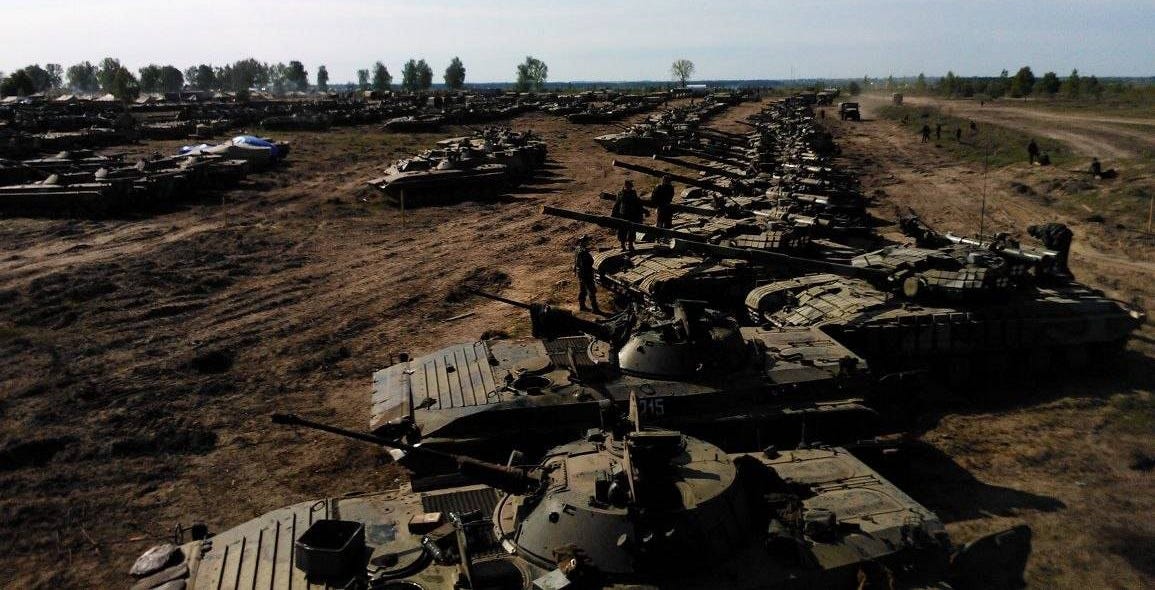
By mid-May, Kyiv had practically lost control of most of the Donbas and the already pourous Eastern border. On May 9th, fierce fighting broke out in the region’s second largest city, Mariupol, as militants attempted to capture the city’s central police station. Among others, mobilized from the 72nd Mechanized Brigade arrived as reinforcements with their armored BMP vehicles. Ensuing fierce fighting left the police station a ruin, and killed well over a dozen people, including many civilians.
Mariupol had been the last major city in the region still under government control, but after the fighting of May 9th the government forces retreated out of the city limits. The rest of Donetsk and Luhansk Oblast saw a rapid spread of checkpoints and roadblocks set up by the Russian militants.
The control of movement on the major roads was the main way for either side to establish presence in an area. Ukrainian forces manned a growing number of scattered checkpoints of their own. The government checkpoints, however, stretched far beyond the limits of the Donetsk and Luhansk Oblasts. They had been set up all throughout the south-east, as far as Odesa. This stretched the government’s limited manpower even further.
With each day, the need for reinforcements in the Donbas became ever more pressing.
On May 5th, first troops from the 51st Brigade arrived to Donetsk Oblast, setting up temporary camp in an airfield near Mariupol. Maj. Polinkevych’s 3rd Battalion was sent out to establish control over a crucial stretch of road north of the city, in order to prevent the militants in Donetsk from linking up with the militants in Mariupol.
Polinkevych set up several checkpoints near the transport hub of Volnovakha. The main one, Blockpost #10, was for all intents and purposes well within hostile territory. It proved to be the most problematic. And so, Major Polinkevych would spend days at a time at the checkpoint to prevent a complete collapse of morale.
Most of the servicemen assigned to Leonid’s battalion seem to have been mobilized from 9th to 12th of April. Just a month later, they were on the frontlines. Discipline, motivation, or even basic training were all nigh unheard of. Zaporizhzhian journalist Hennadii Volkov would visit one of the Brigade’s checkpoints in June and what he saw there was, mildly put, insane.
The Ukrainian army can not even issue uniforms. The soldiers at the checkpoint looked like something between Mexican sicarios and insurgents from the Caucasus. […]
I don’t want to demoralize people, but the soldiers told me to bring their words to the internet: “We are being held here against our will like livestock, being lied to by everyone.”
First of all, there is not a single volunteer here. Everyone is mobilized, and it feels like they took in just about anyone. I ask a Volhynian kid with a police-grade AKSU: “How did you get mobilized?” - “They called me in to a recruitment office. Took a photo. Filled out my documents in a day, then boarded me on a train and I was in the army. Gave me a rifle, ammo, and here I am. I never even fired it!” - “Wait, what do you mean you never fired it? Aren’t you a reservist?” - “No, I was never in the army before!”
On May 19th, relatives of the mobilized from Kovel gathered in front of the City Council. They demanded that the soldiers be returned home from deployment and that otherwise, their families will block the international Kyiv-Warsaw highway. Local military commissar Vasyl Sush responded that nothing could be done now, but that other units were currently in training to replace those already on deployment. This was little consolation. Local officials promised to bring the issue to the Verkhovna Rada. Arrangements were made for a special session in the Rada, with the relatives in attendance. But everyone knew this was only a start of a long process, while in the East situation deteriorated by the day.
“My son was mobilized over a month ago. Now I’m hearing that there in the East, where furious fighting has been raging for over a month, fighting that he’s now taking part in, there are no bulletproof vests, no sleeping bags, no food, no medicine. The boys were issued only one vest for several people and they have to take turns wearing it, while sympathetic locals from nearby villages bring them food. These kids were sent to their deaths!” - practically screamed a mother of one of the soldiers […]
The situation at the 3rd Battalion’s checkpoint near Volnovakha was chaotic. There were few guards, and those that were there didn’t seem to be taking their job seriously. Most of the soldiers sat around in small groups in shade of the shrub, facing away from the road. Vehicles, including armored BMPs and supply trucks, sat spread out along the road in no particular order. Major Polinkevych seems to have been exasperated at the situation, but still working to improve it. As his father recalled:
My son was asking for permission to dig in, to enter a state of combat readiness, but he was told that he must not put in doubt the decisions of the high command. When I asked Brigade Commander Yatskiv what Lionia was doing at that checkpoint again, even though he already been there for the time required of him, Yatskiv answered: “The soldiers said that they won’t stay there unless Polinkevych was with them. Nobody else satisfied them. So I had to send him in again.” In any case, it was hard for those mobilized soldiers who had become used to civilian life, who in three weeks of training only shot maybe two rounds each, who were not prepared even psychologically to fight the enemy.
On May 21st, a group of about a hundred civilians from the nearby villages gathered around Polinkevych’s checkpoint. According to Svitlana, Leonid’s sister, Lionia told her that “it is very psychologically difficult: the locals are all scared of us, they think we’ve come to kill them, to loot their belongings..” So Polinkevych went out to try to calm them down. He recognized some faces as the local “anti-Maidanites,” a pro-Russian movement often serving as valuable sources of information to the armed militants.
Some time earlier in the day, a man filming on his phone walked around the checkpoint as his pro-Russian buddies argued with the soldiers. “They are turning you into zombies,” said one of the civilians, referring to the Ukrainian propaganda purportedly washing the soldiers’ brains. “In case something happens, remember: nobody here is going to help you.” Meanwhile, the man filming does a meticulous walk through of the checkpoint, curiously attentive to it’s defences.
The checkpoint was a sitting duck. In the evening, Leonid’s parents called him again. In a somewhat better mood, he told them everything will be alright.
This was the last time they’d speak to their son.
“HOLY FATHER, PRAY FOR US, THEY ARE ALL DEAD”
MAY 22, EARLY MORNING
Between four and six AM, a convoy of several trucks pulled up to the checkpoint. Most of the soldiers were still asleep. The trucks seemed to be money transports belonging to PrivatBank. In some versions of the story, the drivers tell the guards they’re from the Ukrainian “Donbas” battalion. While the guards deliberate on what to do, the trucks proceed forward.
Those inside are members of a Horlivka-based Russian paramilitary group headed by Igor “Demon” Bezler. Living in Horlivka for over a decade, Bezler - an agent of the Russian GRU - had been able to build up perhaps the most cohesive group fighting on the Russian side.
Once the armored trucks pass the barriers, their rear doors swing open. Bezler’s militants open fire with machine guns and grenade launchers. At least one BMP explodes, the ammunition dump catches fire and begins to cook off.
The dazed soldiers manage to put up next to no resistance. Major Polinkevych is killed early in the attack. A soldier will later find his body with “half his head missing.” Helicopters are called in for back-up as the rest of the soldiers can do nothing but run and hide.
By the time the helicopters arrive some two hours later, the militants are long gone. Survivors from the checkpoint huddle behind a truck some distance away when the ammunition dump explodes. The confused soldiers, not sure what to do or even whose helicopters are these, repeatedly call for their commander, to no avail.
In time they organize themselves into small groups and take turns running for a nearby treeline. Medics treat some of the lightly wounded, awaiting ambulances for the others.
Some civilian cars driving by stop and help the soldiers in various ways. While an ambulance is unavailable, one man volunteers to evacuate a lightly-wounded soldier in his own car.
18 soldiers had been killed in the attack, and 32 wounded. Most had died within the first few minutes.
The attack on the 51st Brigade’s checkpoint sparked public outrage at the army leadership. It was the deadliest single incident of the war so far. Where previously deaths were limited to more elite units and numbered in single digits, now mobilized soldiers were dying in dozens.
On May 23rd, Bezler’s group took responsibility for the attack. They showed off the weapons that their raid netted them.
The high command had to find someone to punish, and as the battalion commander himself was dead, it was the Brigade commander Col. Yatskiv who headed for the chopping block. He was relieved of command, despite protests by many of his subordinates, and would suffer a debilitating heart attack on the 26th (it is said to have been caused by the stress of this incident). The soldiers protested the new appointed commander to the point of refusing his orders, and so an interim commander was appointed instead.
The new interim Brigade Commander, Col. Pivovarenko, inherited over 4000 soldiers. Pivovarenko had the reputation of being a harsh and demanding leader, focused on discipline. He was now responsible for these soldiers, while facing a cunning enemy that grew more dangerous day and night.
The loss of Major Leonid Polinkevych seems to have been taken especially hard by the troops. Kostiantyn Zinkevych, the Volhynian activist crowdfunding for the Armed Forces, later reminisced that Polinkevych was an upright and diligent officer: “In our last phone call, Leonid asked for a portable radio station, he was saying he’ll pay for it later. His soldiers had lost the one they had.”
For the time being, most fighters of the 51st Brigade were pulled back from the front for recovery. However, in just a few weeks they would be sent back.
Soldiers in the 51st and other units were starting to lose their friends. For them and for the rest of the Ukrainian forces, this war was becoming a lot more personal. It became clear to them that it is war, it has begun, and the hardest was yet to come.
Thank you for reading. If you found value in this, please consider liking and sharing this post. If you want to support my efforts at providing English-language coverage of the early invasion and uncovering the forgotten stories of those who rose up to meet it, consider donating to my BuyMeaCoffee.





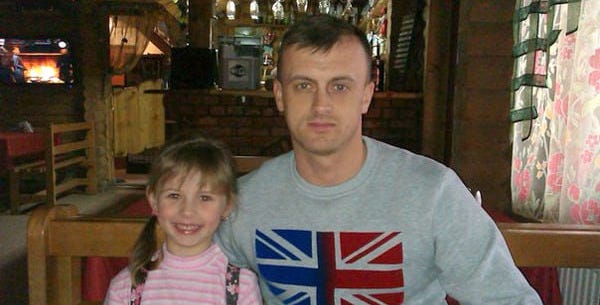
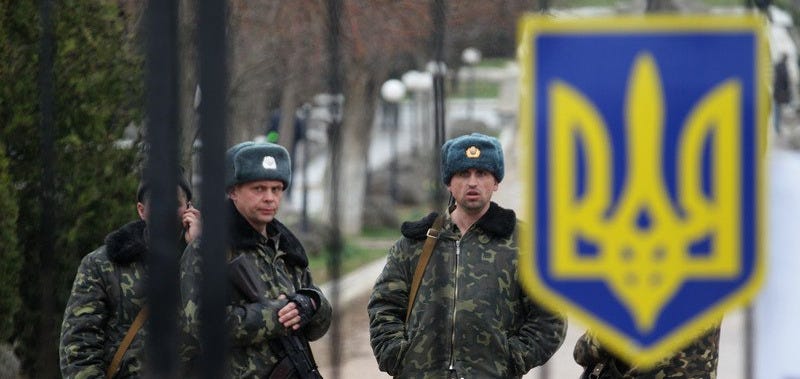

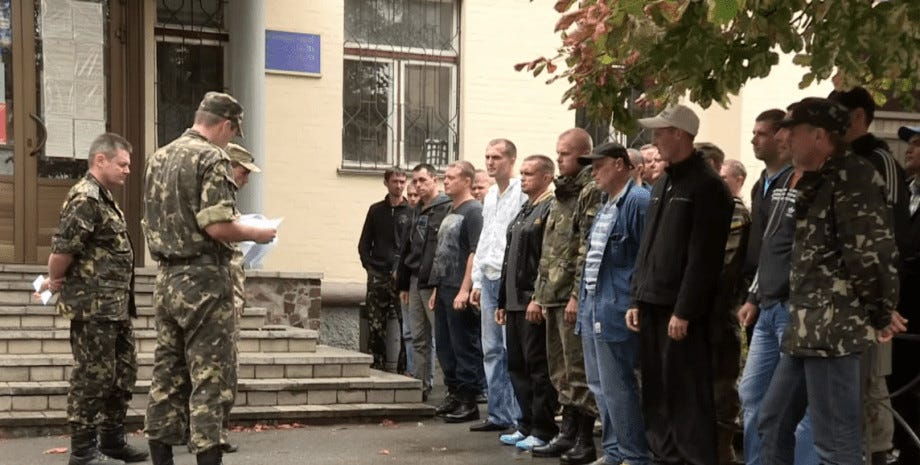


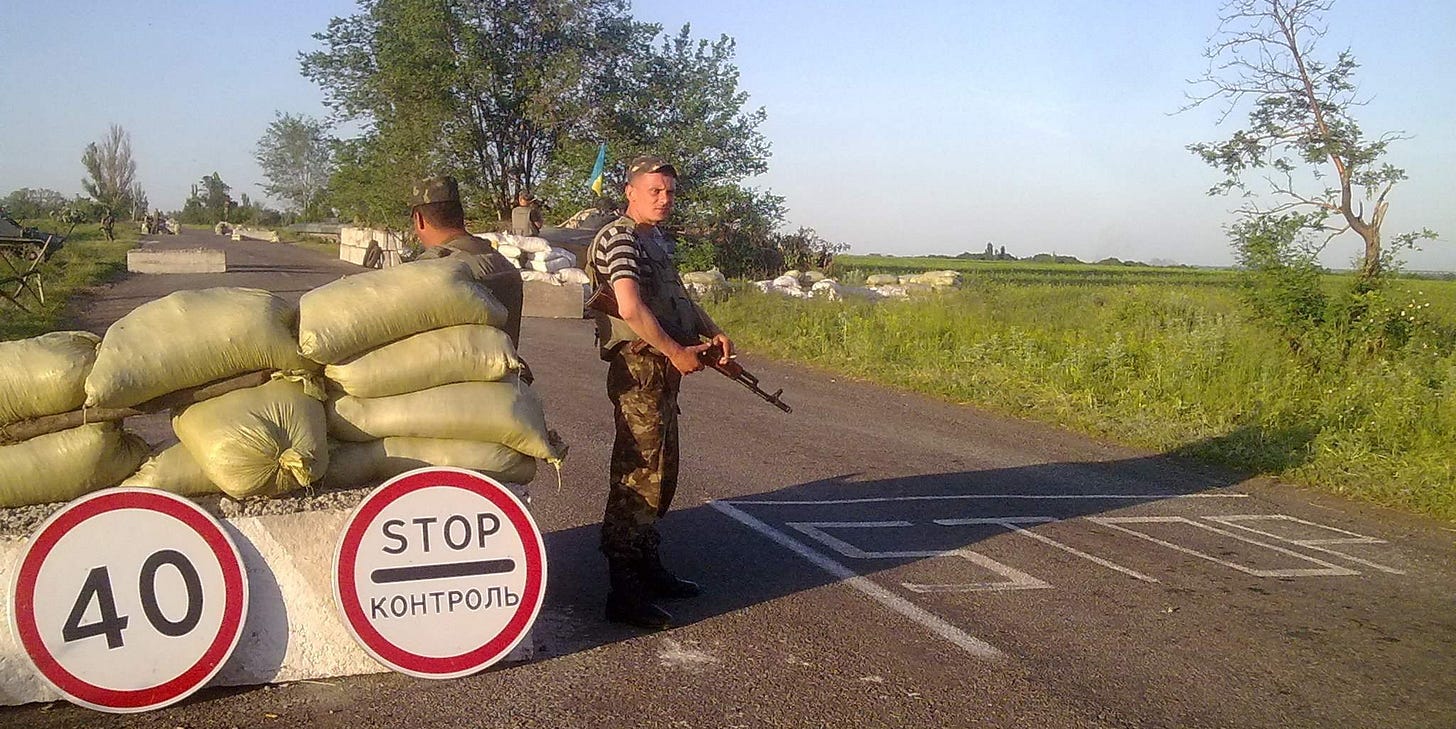
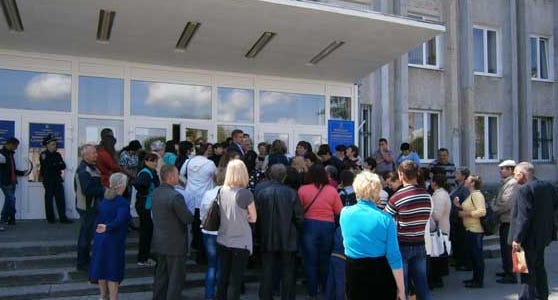


Very well written and detailed peice. Thanks for sharing